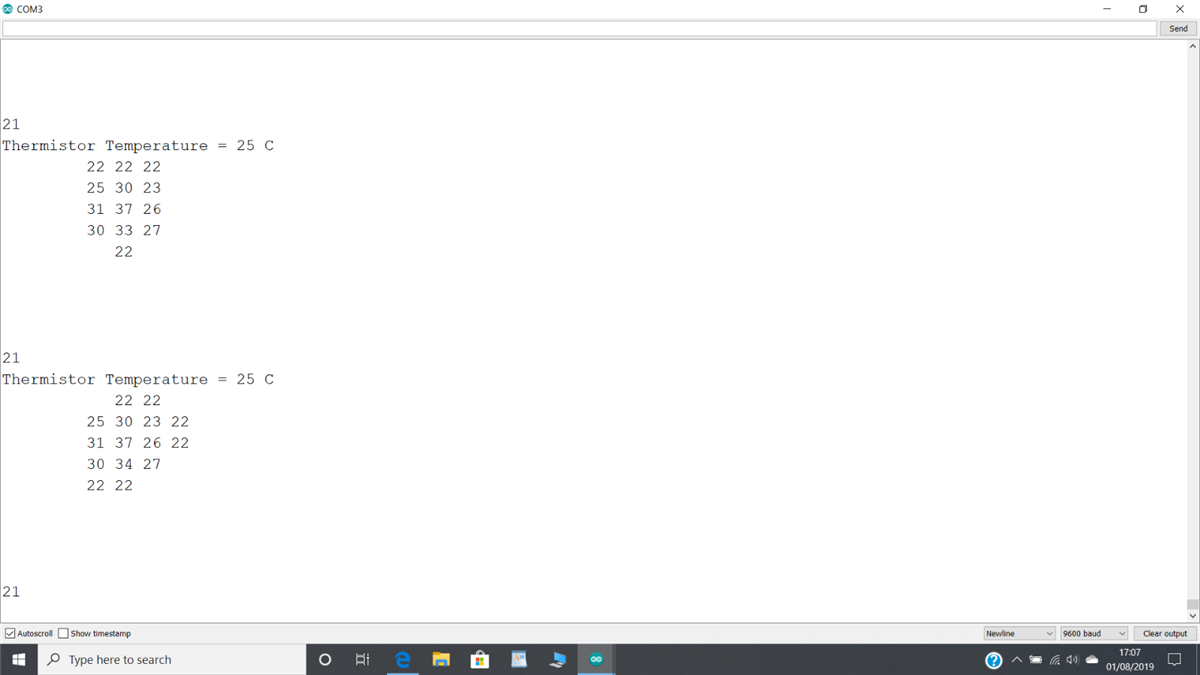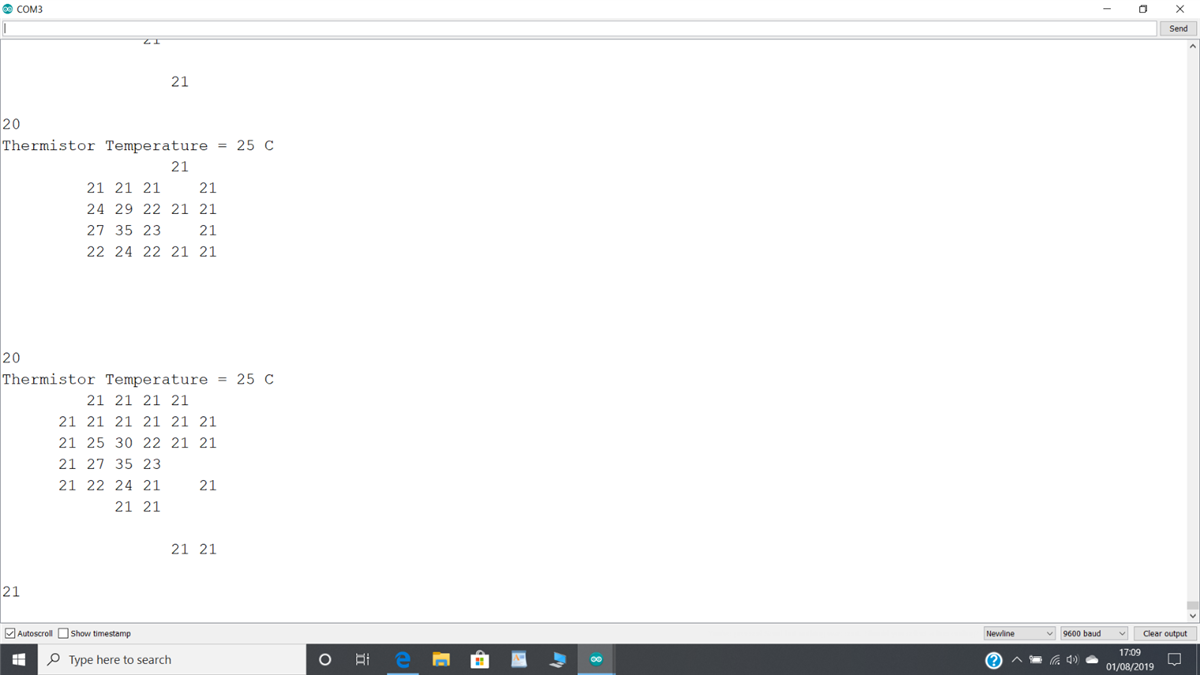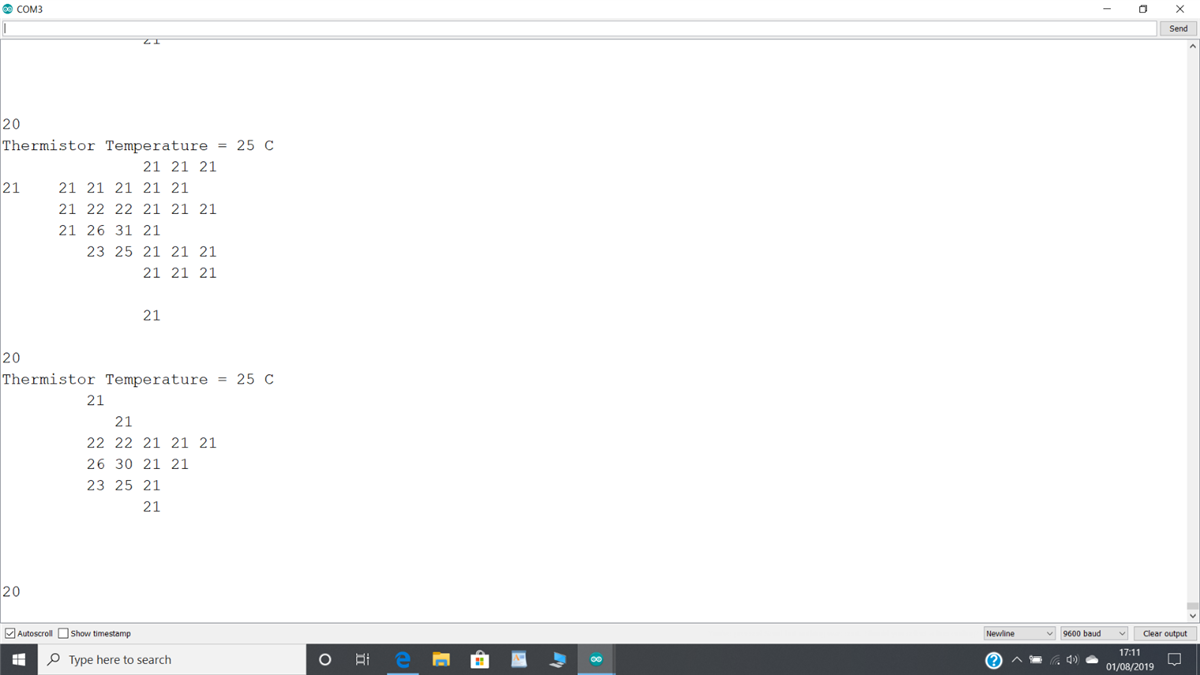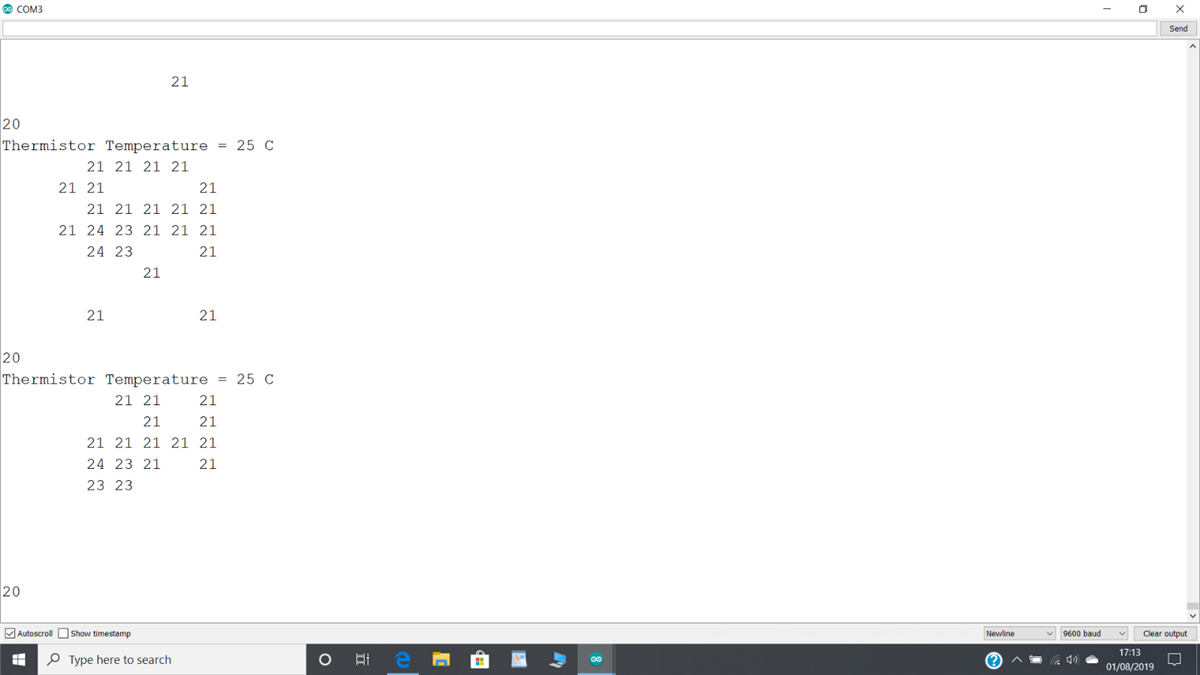The GridEye sensor is working so now I have to work out how to recognise when a cat comes along (or a dog or a fox). To help with my own understanding of what the GridEye sensor data will look like I have set up a simple experiment of the GridEye and a boiled kettle of water in an otherwise unobstructed area, but inside the house. I have changed the data displayed so that only temperature values higher than the average are displayed with anything else just being blanks. This is to help 'see' only those elements that are hotter than the background. I realise that this doesn't really work for large hot objects which fill the sensor point of view but as the sensor angle is 60 degrees this isn't going to be a problem except at very short distances.
So below is the data obtained at 50 cm
This is the data at 75 cm
This is the data at 100 cm
This is the data at 150 cm.
This is not quite what I was hoping for. At the close range there is a nice cluster of the higher temperature pixel values but as the distance increases the number of pixels registering the higher temperature reduces quite quickly, which I did expect, but also the temperature drops as well, which I was not expecting. But after thinking about it, it does make sense. The sensor has a wide 'beam width' of 60 degrees so the area collected by each sensor increase rapidly and the temperature shown is going to be an average of the whole of that pixel area. So the sensed temperature will drop as more and more of the non-object, or background temperature, is included. This can be seen most clearly in the data at 150 cm where there is almost no discernible higher temperature pixels, just one pixel at 24 degrees, with the rest effectively being the background temperature.
This data is collected inside the house on a relatively warm day using a pot of hot water and now I will attempt to collect some data from outside during the early evening into the night to see if it might be better. At present I do not have a long lasting battery power source so I will be running the system from a USB cable out of my office window. I know that cats sometimes walk past this window so perhaps they will oblige tonight.
There is also the problem that cat fur is designed to keep cats warm so although the cat body will be at a higher temperature of approximately 38 degrees, the external temperature of a cat might not be. Maybe I'll find out tonight.
Dubbie





Top Comments
-

genebren
-
Cancel
-
Vote Up
+2
Vote Down
-
-
Sign in to reply
-
More
-
Cancel
-

dubbie
in reply to genebren
-
Cancel
-
Vote Up
+1
Vote Down
-
-
Sign in to reply
-
More
-
Cancel
-

beacon_dave
in reply to dubbie
-
Cancel
-
Vote Up
+3
Vote Down
-
-
Sign in to reply
-
More
-
Cancel
-

genebren
in reply to dubbie
-
Cancel
-
Vote Up
+2
Vote Down
-
-
Sign in to reply
-
More
-
Cancel
-

beacon_dave
in reply to genebren
-
Cancel
-
Vote Up
+3
Vote Down
-
-
Sign in to reply
-
More
-
Cancel
Comment-

beacon_dave
in reply to genebren
-
Cancel
-
Vote Up
+3
Vote Down
-
-
Sign in to reply
-
More
-
Cancel
Children